I put the fastest selfie drone to the test on my bike, and it refused to lose me
HoverAir’s X1 PROMAX can keep up with slow-moving cars, let alone me on the bike
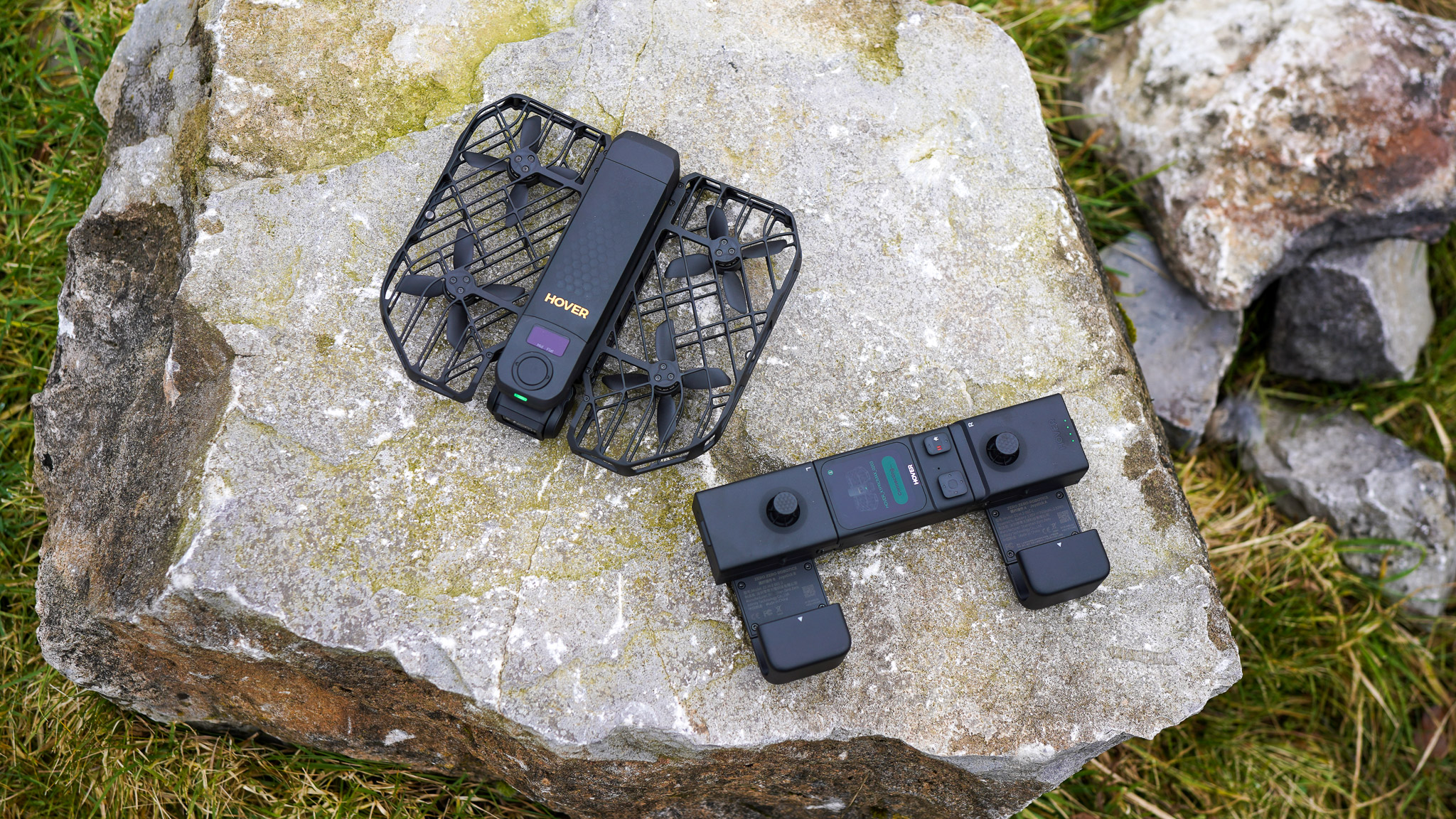
The HoverAir X1 PROMAX is the fastest, most advanced selfie drone yet, packing 8K video, 10-bit HLG, and next-level tracking into a pocket-sized frame. While its lightweight build and high price hold it back, its speed, smart flight modes, and stunning footage make it a compelling choice for creative users.
-
+
Amazing speed for such a compact drone
-
+
8K/30fps maximum video resolution
-
+
Slow-motion video capability (up to 120fps)
-
+
Vertical shooting option
-
+
Dedicated indoor flying mode
-
+
Easy operation
-
+
Automatic flight modes
-
-
There are more affordable options (albeit slower)
-
-
Lightweight construction feels less sturdy
-
-
Comparatively short flight time
-
-
Only two-axis gimbal
Why you can trust T3

HowevAir has been the go-to selfie drone brand thanks to its lightweight, easy-to-control models, such as 2023’s HoverAir X1. Last year, the company announced two new selfie drones, the X1 Pro and X1 PROMAX, both with a maximum speed of 26mph (42 km/h)—much faster than most DJI drones.
The HoverAir X1 Pro received a glowing review from my esteemed colleague Derek, so I was looking forward to trying the X1 PROMAX, the flagship model aimed at professional content creators. The main difference between the X1 Pro and X1 PROMAX is that the latter can shoot in 8K and has a vision-based rear-side collision detection system.
Are these two USPs enough to justify the higher price of the X1 PROMAX, or are you better off with the X1 Pro? More importantly, do you need the X1 PROMAX with drones such as the DJI Neo and DJI Flip around, catering for more beginner pilots? How does the X1 PROMAX compare to the best drones? Let’s find out.
HoverAir X1 PROMAX review
Price and availability
The HoverAir X1 PROMAX was announced in August 2024 and is now available to buy via HoverAir US and HoverAir UK for $699/ £639 (approx. AU$1,096, Standard Bundle) – AU price and availability TBC. For comparison, the HoverAir X1 Pro sells for $499/ £459 (approx. AU$782).
The X1 PROMAX Basic Combo, which includes an extra battery, Charging Hub, Power Adapter and Combo Case, is $955. The Cycling Combo has two extra Smart batteries, the Beacon, a Power Adapter, a Carry Bag, ND Filters, a Charging Hub and a HandleBar Mount for $1,292. The Skiing Combo is the next step up, which gives you two extra Thermo batteries, a Beacon, a JoyStick, PowerCase, a Power Adapter, a Carry Bag, ND Filters, and a Charging Hub for $1,620.
Specifications
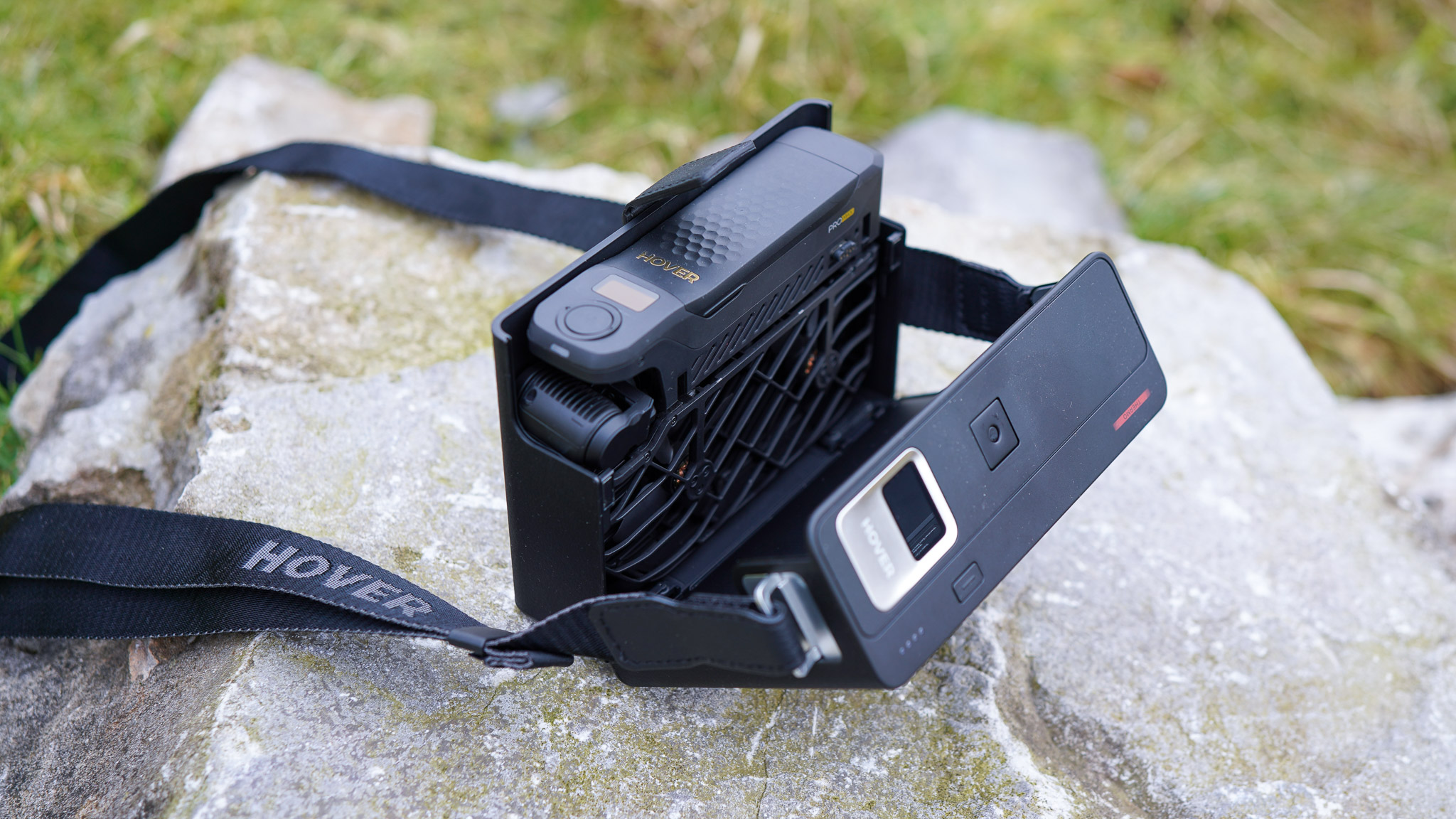
The X1 PROMAX in the Power Case
- Dimensions (L×W×H): Folded: 149 x 105 x 34 mm / Unfolded: 149 x 173 x 39 mm
- Weight: 192.5 grams
- Battery life (flight time): 16 mins
- Range: 500m (smartphone app) / 1 km (Beacon)
- Speed: 42kph (26mph) / short bursts: 60kph (37mph)
- Obstacle avoidance: Yes, vision-based rear-side collision detection
- Max Wind Speed Resistance: 10.7 m/s (Level 5)
- Built-in GPS: No
- Internal storage: yes, 64 GB (plus Micro-SD card slot for up to 1TB storage)
- Sensor: 1/1.3 inch CMOS (equivalent to ½-inch)
- FOV: 107 degrees
- Max photo resolution: 12MP
- Max video resolution: 8K @ 30fps, 4K @ 120fps
- Vertical video: Yes, 2.7K @ 60fps
- Image stabilisation: Two-axis mechanical gimbal with EIS
- Connectivity: Wi-Fi 6 with up to 1.2 Gbps download speed
Design and build quality
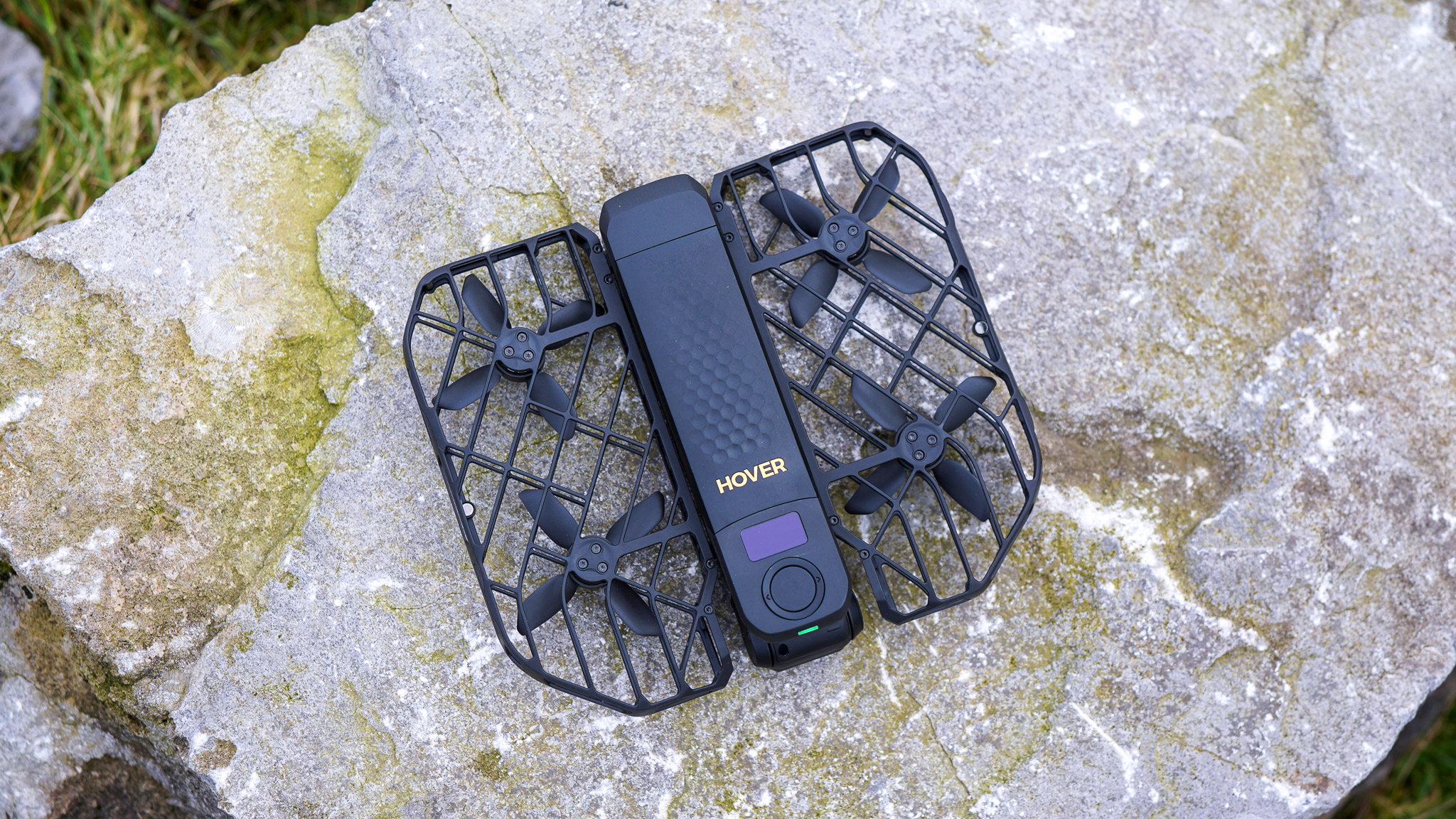
The propellers are protected by a durable Hyper-elastic Material frame.
The HoverAir X1 PROMAX has the same physical dimensions and flight characteristics as the X1 Pro. It measures 149 x 105 x 34 mm when folded and 149 x 173 x 39 mm unfolded and fits comfortably in your palm or your pocket (when folded). The propellers are protected (and fully enclosed) by a durable HEM (Hyper-elastic Material) frame.
The drone has a lightweight chassis, weighing only 192.5g, well under the usual 250g limit posed by many regulation bodies. Because it looks the same as the HoverAir X1, the X1 PROMAX almost feels too lightweight and fragile for a prosumer drone; I wouldn’t mind if it were heavier and more robust, making it more resilient for professional use.
On the other hand, the X1 PROMAX is intuitive to use, even without a controller. In classic selfie-drone style, you can operate it using the button on the drone. A ring around the button lets you choose flight modes, of which there are 12, including manual control. The drone has a built-in speaker announcing which mode you’re currently in (it’s pretty loud).
A small display is positioned just above the button, showing which mode is active and the setting of that mode. It’s bright and easy to read. The camera unit is at the front of the drone (understandably) mounted on a two-axis gimbal. I’d expect a three-axis gimbal on a drone aimed at professionals; that said, the X1 PROMAX’s gimbal performed well on my tests.
The camera unit comprises a 1/1.3'' CMOS sensor and a custom 7-layer lens featuring 14 stops of dynamic range and a 107-degree field of view. I’ll talk more about camera resolution below; in short, it’s sharp and delivers impressive clarity for its size.
Skiers and snow sports enthusiasts will love that both the X1 Pro and X1 PROMAX can operate in temperatures as low as -20ºC (-4ºF) with the Thermo Smart Battery. This is a big advantage over DJI drones, which often can’t go any lower than -20ºC (32°F). Makes sense that the X1 PROMAX has a Skiing Combo version.
Finally, the HoverAir X1 PROMAX has a Level 5 wind resistance, meaning it can withstand gusts up to 10.7 m/s. Quite impressive for such a compact drone.
Features
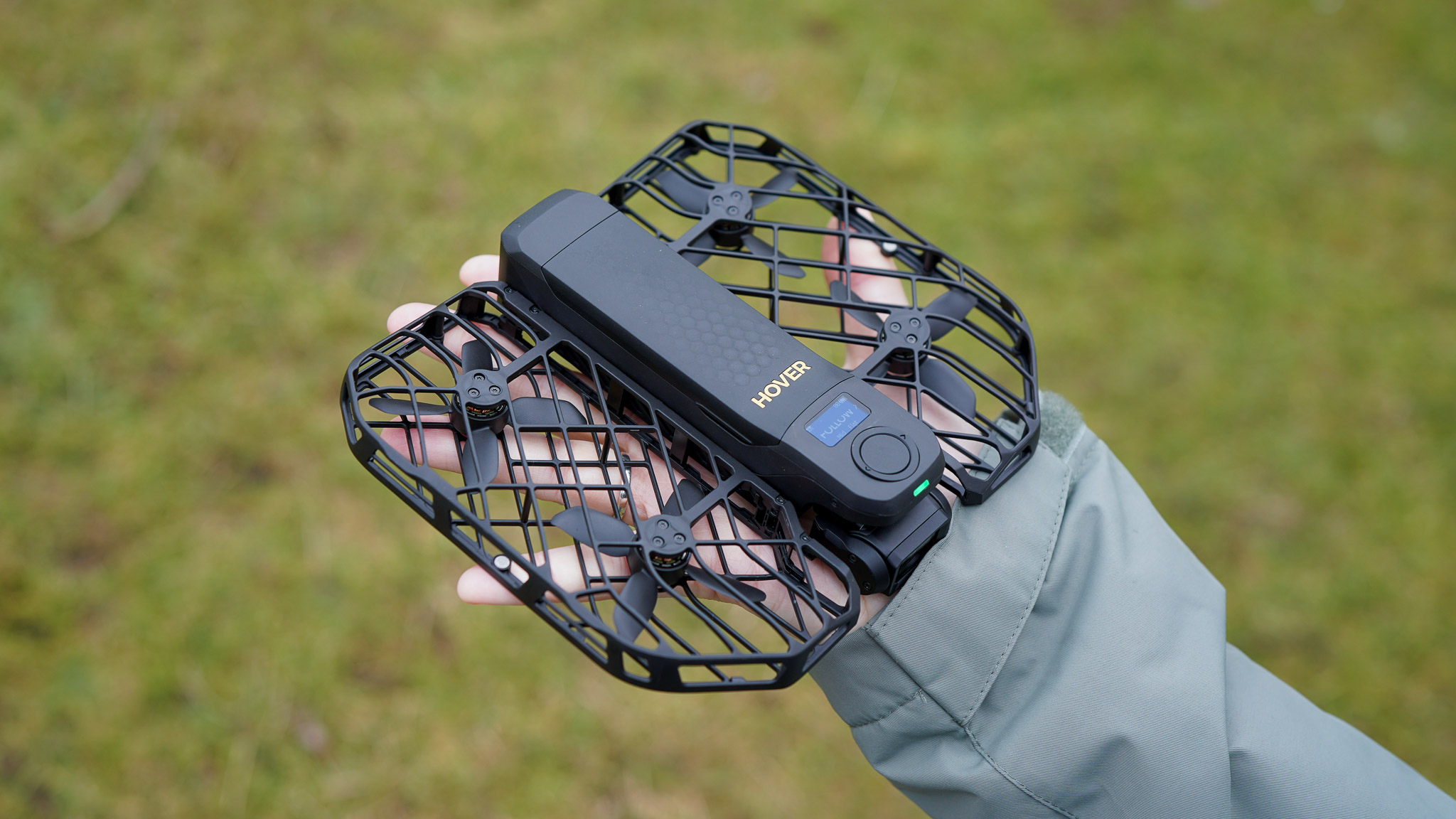
The X1 PROMAX fits comfortanbly in your palm
The HoverAir X1 PROMAX is a selfie-drone, meaning it has autonomous features. There are 11 of these, including Hover (the drone is stationary, but it positions the camera at you), Zoom Out (the drone flies away from you and back at a 45-degree angle), Follow, Orbit and Bird’s Eye (going straight up and back down).
On top of these, the X1 PROMAX also has some unique features, such as Indoor follow, Cycling Mode, Ski Mode, Side Track, Dolly Track and my favourite, Dolly Zoom. Some of these are less faff to use than others.
For example, to be able to use the X1 PROMAX in Ski Mode, you need the Thermo batteries and apply stickers on the side to prevent water from entering the drone. Plus, should the drone fall on snow, you need to pick it up immediately to prevent water from entering the device.
Then, you have to remove the stickers when you use the drone again in higher temperatures to prevent it from overheating. When I mentioned above that the X1 PROMAX feels less durable, this is what I meant. I’d expect a professional drone to be able to withstand falling in the snow, at least for a little while.
The X1 PROMAX has 64GB of internal memory, which is extendable to 1TB using a MicroSD card. I found the internal storage to be more than adequate for non-commercial use; however, if you keep shooting in 8K, I’m sure it’ll fill up quickly.
Speed is certainly the biggest advantage of using the HoverAir X1 PROMAX. Max auto-follow speed is a whopping 26 mph (42 km/h), and the overall maximum speed of the drone is even faster: you can fly it at 37 mph (60 km/h) in manual mode. Not quite the 97 km/h (60 mph) maximum speed of the DJI Avata 2, but fast enough for a selfie drone.
Things are a little less rosy in the flight time department. The official maximum flight time is 16 minutes, well below the 31 minutes of the DJI Flip. Again, I’d expect a much longer battery life from a professional drone. Considering how lightweight it is, HoverAir could’ve just included a larger battery to enable the X1 PROMAX to fly for longer.
A slight update over the X1 Pro is obstacle detection. While the X1 Pro uses rear-side active collision detection and proximity sensors, the X1 PROMAX has a vision-based rear-side active collision detection system as well as CV as proximity sensors. Both drones have OmniTerrain technology, though.
Despite the lack of GPS on board, OmniTerrain enables reliable positioning and motion planning, even over challenging terrains such as water, snow, and cliffs. This system activates automatically within 30 seconds to 3 minutes after powering on the drone, calibrating the necessary sensors for optimal performance.
One nog benefit of OmniTerrain is that it helps the drone maintain smooth and reliable tracking in low-light conditions, like nighttime activities like cycling or running. I would have preferred GPS as well as OmniTerrain – maybe we’ll get that with the X1 PROMAX 2.
Flight performance
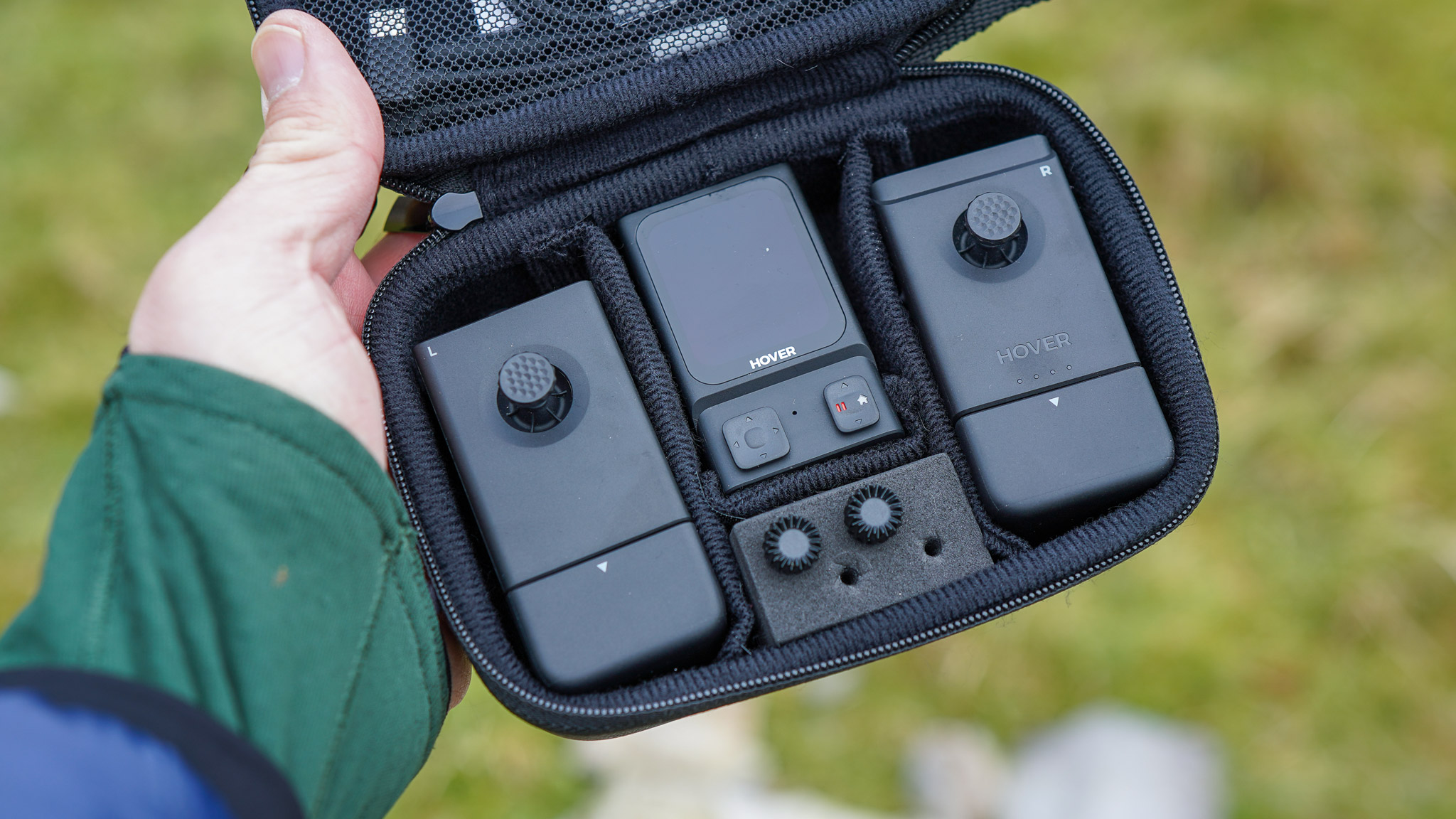
The Beacon with the two handles
I’m always conscious about taking selfie drones out for a spin. It’s not like I don’t trust them; it’s just the general anticipation that tech is not always 100% reliable, and if the selfie drone following you at higher speeds decides not to see an obstacle, that can cost you a lot of money in repairs.
I was even more cautious with the X1 PROMAX due to its high maximum speed. An unexpected collision with a pedestrian or a car pulling out too soon after you crossed the street could mean the drone crashing into them at 26 mph – not great.
That said, the X1 PROMAX never had any issues following me, even when I was on my electric bike. I kept my ears pricked for the whirr of the propellers and avoided people and obstacles as best as I could to give the dinky flying tripod a fighting chance, but it passed my tests with flying colours.
I must confess, I didn’t push the X1 PROMAX to its limits, flying it over choppy waters and through thick forests in the dark. I mentioned this multiple times, but I was concerned about the drone flying into obstacles at a high speed, which would have meant the end of testing. In ‘standard’ situations, though, it performed well.
The Beacon control is interesting. You can use it as a motion controller by attaching only one handle or as a standard controller using both grips. The Beacon has a built-in display, but if both handles are attached, you can use your phone as an external display.
It might just be me, but I wish obstacle avoidance were more pronounced on the X1 PROMAX – the drone had no issue flying into the wall at full speed in manual mode. I’d expect at least a small degree of flight path correction if there are obvious obstacles in the way. In autonomous modes, especially if it’s following you outdoors, the X1 PROMAX does a good job of steering clear of objects in its way.
Camera performance
One thing that sets HoverAir drones apart from the competition is image quality. I’d say it’s on par with DJI’s prosumer models, which I appreciate is a bold claim. The X1 PROMAX renders colours beautifully, and footage looks pin-sharp straight out of the box. With 14 stops of dynamic range and a 107-degree field of view, videos appear well-balanced across the frame.
Despite its two-axis gimbal, the SmoothCapture 2.0 stabilisation system does a tremendous job eliminating shake. I saw no signs of blurriness during testing. Colours pop just enough, slightly oversaturated but pleasing to the eye.
There are plenty of frame rates and resolutions to choose from, with 8K @ 30fps as the highest. While impressive, most people won’t need this—sharing platforms often downscale to 4K, which is already more than detailed enough for most screens.
A more interesting feature is 10-bit Hybrid Log-Gamma (HLG) recording, a high dynamic range (HDR) video format that enhances colour depth, smoother gradients, and preserves detail in highlights and shadows. The X1 PROMAX captures over a billion colours, reducing banding and offering better flexibility for grading. The X1 Pro lacks this feature, but several DJI drones include it, like the Mini 4 Pro and Air 3S, both of which cost significantly more.
Slow-motion recording is another strength, supporting 4K @ 120fps. Some cheaper models, like the DJI Flip, offer 4K @ 100fps, but the Flip lacks many of the X1 PROMAX’s other capabilities. Overall, HoverAir’s drone provides a more comprehensive package.
Verdict

The HoverAir X1 PROMAX is the most advanced selfie drone from any brand to date; technologically speaking, it’s impressive. The videos look stunning, and thanks to the myriad of autonomous flight modes and easy operation – not to mention all the accessories – you can deliver unique content time after time.
My biggest grief is that the drone wasn’t built using a commercial mindset. Rather, the X1 PROMAX feels like the X1 Pro on steroids. It’s the same size and weight, uses the same batteries and sensor, has the same maximum speed (which is very impressive, by the way) and operates very much like a selfie drone.
The question is: do we need an overpowered selfie drone such as the X1 PROMAX? I think the answer is no. Instead, Maybe if it weren’t so much more expensive than the X1 Pro, I would recommend it more. I can imagine the hypothetical X1 Pro+ drone with 10-bit HLG and 8K video for $100 extra would sell better.
As much as I like DJI drones, I will always support smaller drone companies because I don’t want just one company dominating the market. As such, I will recommend the HoverAir X1 Pro, but maybe not the X1 PROMAX, unless you’re incredibly keen on the 8K videos. HoverAir, please make a sturdier drone with the same features, and I’ll be the first one in the queue to buy it!
Sign up to the T3 newsletter for smarter living straight to your inbox
Get all the latest news, reviews, deals and buying guides on gorgeous tech, home and active products from the T3 experts

Matt Kollat is a journalist and content creator who works for T3.com and its magazine counterpart as an Active Editor. His areas of expertise include wearables, drones, fitness equipment, nutrition and outdoor gear. He joined T3 in 2019. His byline appears in several publications, including Techradar and Fit&Well, and more. Matt also collaborated with other content creators (e.g. Garage Gym Reviews) and judged many awards, such as the European Specialist Sports Nutrition Alliance's ESSNawards. When he isn't working out, running or cycling, you'll find him roaming the countryside and trying out new podcasting and content creation equipment.
You must confirm your public display name before commenting
Please logout and then login again, you will then be prompted to enter your display name.
-
 Ninja’s new indoor grill can cook 10 burgers at a time – but you might not get it
Ninja’s new indoor grill can cook 10 burgers at a time – but you might not get itNinja supersizes its Sizzle Pro indoor grill
By Bethan Girdler-Maslen Published
-
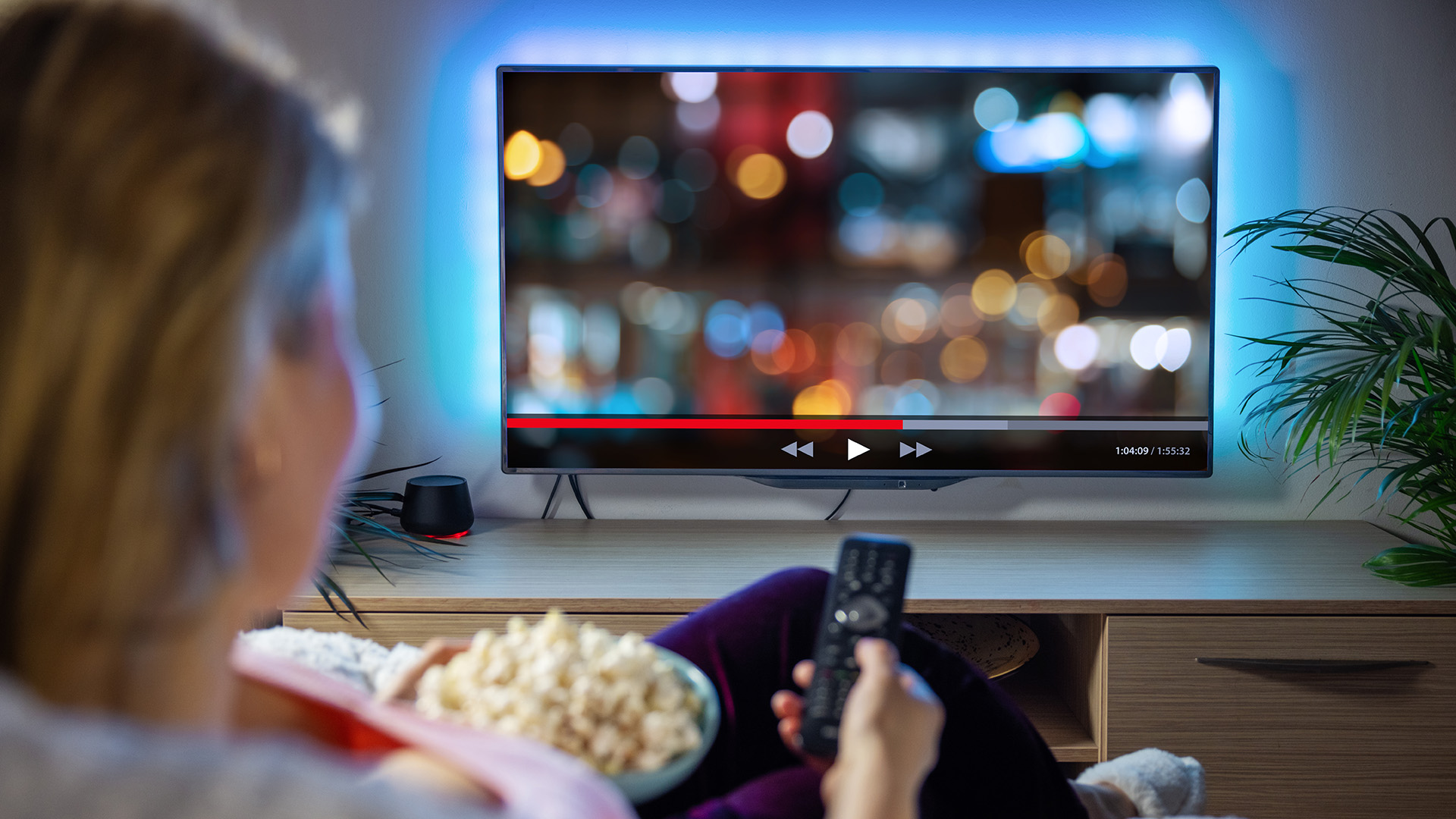 What new TV Licence rules mean for Netflix and Prime Video subscribers
What new TV Licence rules mean for Netflix and Prime Video subscribersHint: nothing yet, but that may change soon
By Britta O'Boyle Published
-
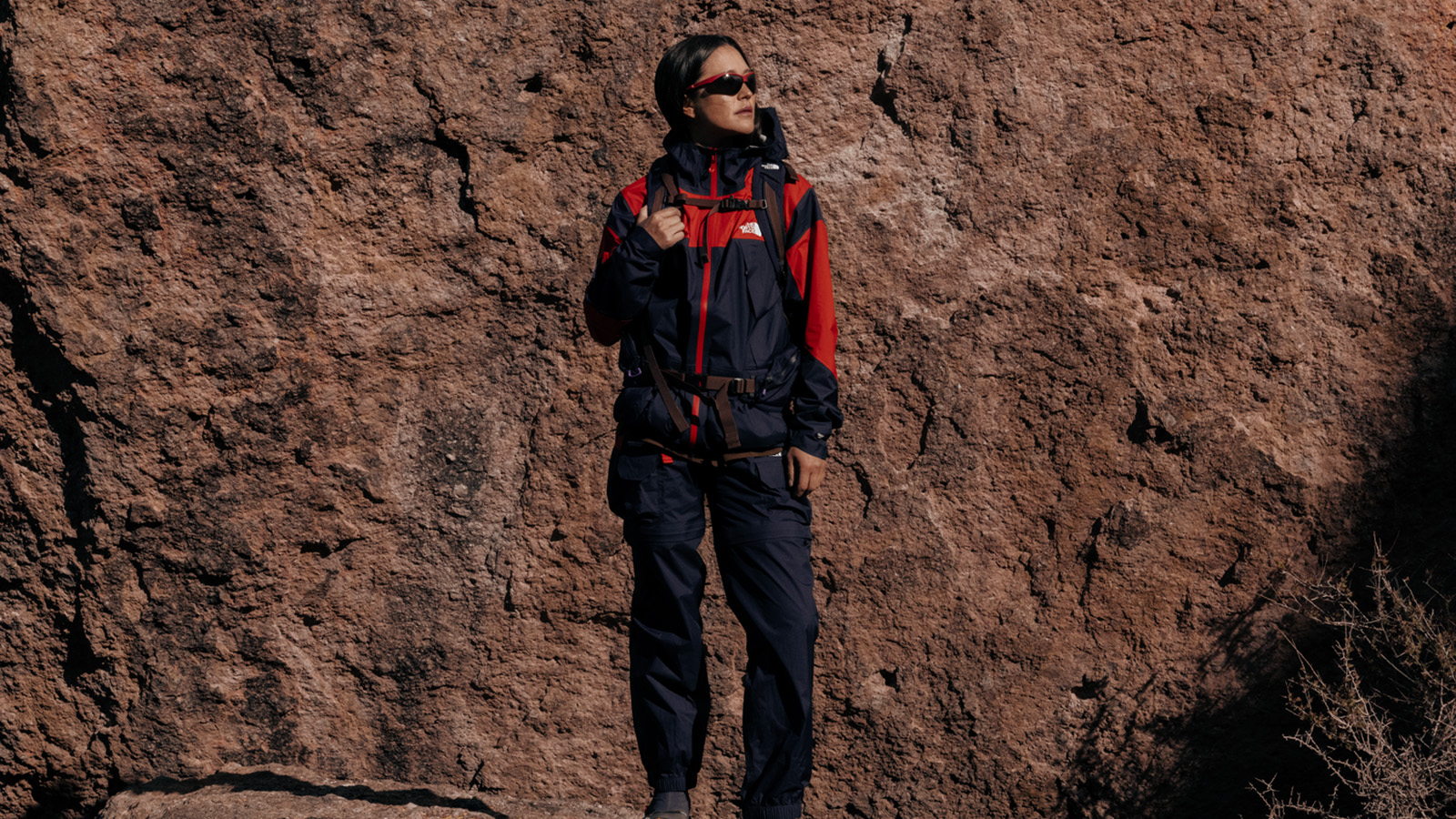 The North Face and UNDERCOVER are back to zen-slam the trails with SOUKUU Season 4
The North Face and UNDERCOVER are back to zen-slam the trails with SOUKUU Season 4Meditative mountain gear? You better believe it – SOUKUU SS25 is part trailwear, part philosophy, and all fire.
By Matt Kollat Published